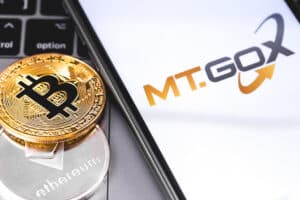
A Comprehensive Guide to Understanding Stablecoins
Stablecoins have emerged as an integral component of digital assets, with a standout trait being their value pegged to unit fiat currency, thus the name.
In a market where the price of the assets held changes violently, the alternative to ‘store’ funds’ value in a manner that dismisses unpredictability and volatility is essential. The alternative is not restricted to crypto traders but expects retailers to embrace cryptocurrencies without worrying about price variations.
Often, most stablecoins are pegged to popularly utilized currencies, such as the Euro or the United States Dollar. Some, such as Tether Gold (XAUt), are pegged to commodities like Gold.
Stablecoins Uses Explained
For most cryptocurrency traders, stablecoins are a lifeboat ferrying them to their intended destination, where they hedge their crypto portfolio without swapping to the fiat currency. This is efficient, particularly during bear markets when trying to keep profit realized in fiat value.
Stablecoins will also become crucial in decentralized finance (DeFi). DeFi presents an option to the current financial systems, one that is developed on public blockchains.
This idea has attained popularity, and there has been a significant rise in the number of projects creating exciting products, such as peer-to-peer (P2P) loans. In case decentralized finance is to expand, stablecoins will certainly be vital since people would require an unpredictability-free way to transact with each other without losing the benefits of cryptocurrencies.
Commercial Stablecoins: From JPM Coin to Libra
Recently, stablecoins have attained mass-media attention as major firms and financial institutions dug deeper. Major bank institutions, led by the US largest bank, JP Morgan, are evaluating the creation of their digital stablecoins.
In the second half of 2019, Facebook announced Libra, its revolutionary project. The project is supposed to be pegged to a collection of fiat currencies and additional assets.
Even central banks and governments started anticipating the idea of stablecoin. The ex-chairman of the US Commodity Futures Trading Commission (CFTC) guided an initiative to make a ‘digital Dollar.
Types of Stable Coins
Centralized Stablecoins hacked by fiat reserve
They are backed 1:1 by fiat currencies stored in bank accounts. Examples include USD Coin, Gemini USD, and Tether (USDT)
They are centralized since they are unveiled and managed by a central organization, a bank, a firm, or a government.
Decentralized Algorithmic Stablecoins
They are still quite new and lack security backing their system. They depend on algorithms to get their prices to remain stable.
Decentralized Stablecoins Backed by Crypto
These relatively new types of stablecoins lack a central operator. Instead, they are managed by a consensus of the users participating in the network.
A perfect example is DAI, Maker DAO’s stablecoin. Users can lock up a specific amount of cryptocurrencies, such as Ether, as security for borrowing DAI.
Understanding Stablecoins Growing Usage
Reduced Fees
The absence of intermediaries and stablecoins’ peer-to-peer (P2P) nature makes transactions cheaper than traditional funds transactions. Transactions executed using stablecoins incur less costs.
Borderless payments
Like Bitcoin, stablecoins can be sent through the internet without consideration for banks, nations, and other kinds of intermediaries.
Quicker transactions
Blockchain-founded transactions are faster compared to conventional ones.
Transparency
Stablecoin transactions are executed on public blockchains. Users can track every transaction, which is impossible with traditional payments.
No volatility
Stablecoins are not unpredictable. This benefits persons seeking safe alternatives to Bitcoin and other cryptocurrencies when sending and receiving funds.
Drawbacks of Stablecoins
Centralization
Most stablecoins pertain to a specific organization, meaning a stablecoin is owned by one entity that manages its issuance and minted supply.
Rely on Traditional Financial Markets
Stablecoins are pegged to fiat currencies, making the value rely on the present condition of the international market. They are also subject to inflation.
Unregulated
The absence of regulation within the field makes it harder for them to grow into what they are intended to be and to function as a transaction means.
Final Thoughts
Stablecoins must have a place in the crypto realm. They link the real world of crypto and fiat and act as a storage place for traders and investors. A regulatory-compliant structure is needed to operate stablecoins.




